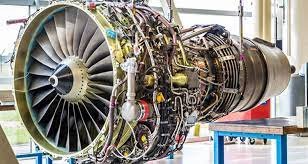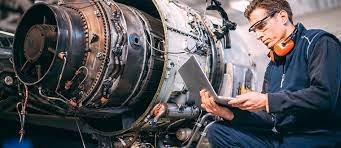Design Engineer Aerospace Propulsion Systems

Introduction
In the vast expanse of the aerospace industry, where innovation and precision converge, lies the pivotal role of the Design Engineer in Aerospace Propulsion Systems. At the forefront of technological advancement, these engineers are the architects shaping the future of flight. They are the masterminds behind the propulsion systems that propel aircraft and spacecraft through the skies and beyond, pushing the boundaries of human exploration and discovery. In this comprehensive exploration, we delve into the intricacies of this esteemed profession, uncovering the multifaceted responsibilities, challenges, and innovations that define the realm of Aerospace Propulsion Systems design engineering.
The Essence of Aerospace Propulsion Systems Design
Aerospace propulsion systems serve as the beating heart of any aircraft or spacecraft, providing the necessary thrust to overcome gravitational forces and propel vehicles through the air or space. Design engineers specializing in propulsion systems are tasked with conceptualizing, designing, and optimizing these intricate systems to meet the stringent demands of safety, efficiency, and performance.
Technical Expertise and Core Responsibilities
Design engineers in aerospace propulsion systems possess a diverse skill set encompassing engineering principles, aerodynamics, thermodynamics, fluid mechanics, and materials science. They leverage their expertise to tackle a myriad of responsibilities throughout the design lifecycle, from conceptualization to production.
Conceptual Design: At the outset of a project, design engineers collaborate with multidisciplinary teams to define project requirements and establish design objectives. They conduct feasibility studies, perform preliminary analysis, and generate conceptual designs that align with performance goals and regulatory standards.
Detailed Design and Analysis: Once a concept is selected, engineers delve into the intricacies of detailed design and analysis. They employ advanced computational tools and simulation techniques to model propulsion systems, predict performance characteristics, and assess structural integrity under various operating conditions. This phase involves optimizing component geometries, selecting materials, and integrating subsystems to enhance overall efficiency and reliability.
Prototype Development and Testing: Design engineers oversee the fabrication and assembly of prototype propulsion systems, working closely with manufacturing teams to ensure adherence to design specifications and quality standards. They coordinate comprehensive testing regimes, including ground tests and simulated flight trials, to validate performance metrics and identify areas for refinement.
Continuous Improvement and Innovation: Innovation is the lifeblood of aerospace propulsion systems design, driving continuous improvement and technological advancement. Design engineers remain at the forefront of emerging trends and technologies, exploring novel propulsion concepts, such as electric propulsion, additive manufacturing, and advanced materials, to enhance efficiency, reduce environmental impact, and push the boundaries of exploration.
Navigating Challenges in Aerospace Propulsion Systems Design
Designing aerospace propulsion systems presents a myriad of challenges, ranging from technical complexities to regulatory constraints and cost considerations. Design engineers must navigate these challenges with ingenuity and precision to deliver safe, reliable, and cost-effective solutions.
Performance Optimization: Achieving optimal performance in aerospace propulsion systems requires a delicate balance of competing priorities, including thrust-to-weight ratio, fuel efficiency, and environmental impact. Design engineers must employ advanced modeling techniques and optimization algorithms to fine-tune system parameters and maximize overall performance within stringent weight and size constraints.
Regulatory Compliance: The aerospace industry is subject to stringent regulatory frameworks and certification requirements aimed at ensuring the safety and airworthiness of aircraft and spacecraft. Design engineers must navigate complex regulatory landscapes, such as Federal Aviation Administration (FAA) regulations and European Aviation Safety Agency (EASA) standards, to ensure compliance throughout the design and certification process.
Cost and Resource Constraints: Cost considerations play a pivotal role in aerospace propulsion systems design, particularly in commercial aviation and space exploration. Design engineers must strike a delicate balance between performance and cost-effectiveness, optimizing designs to minimize manufacturing complexity, material usage, and operational expenses without compromising safety or reliability.
Environmental Sustainability: In an era of growing environmental awareness and sustainability concerns, aerospace propulsion systems must strive to minimize carbon emissions, noise pollution, and ecological impact. Design engineers are increasingly tasked with developing eco-friendly propulsion technologies, such as biofuels, hybrid-electric systems, and hydrogen propulsion, to mitigate environmental footprint and promote sustainable aviation and space exploration.
Emerging Trends and Future Directions
The landscape of aerospace propulsion systems design is continually evolving, driven by emerging technologies, market demands, and societal trends. Design engineers must remain agile and adaptive, embracing innovation and exploring new frontiers to shape the future of flight.
Electric Propulsion: Electric propulsion represents a paradigm shift in aerospace propulsion systems, offering significant potential for efficiency gains, emissions reduction, and operational flexibility. Design engineers are at the forefront of electric propulsion research and development, exploring advanced motor technologies, energy storage systems, and power management solutions to enable electric-powered aircraft and spacecraft.
Additive Manufacturing: Additive manufacturing, or 3D printing, has revolutionized the aerospace industry, enabling rapid prototyping, complex geometries, and lightweight structures. Design engineers leverage additive manufacturing techniques to produce innovative propulsion components, such as turbine blades, engine housings, and combustion chambers, with enhanced performance and reduced production costs.
Autonomous Systems: The integration of autonomous systems and artificial intelligence (AI) is reshaping the landscape of aerospace propulsion systems design, enabling autonomous flight control, predictive maintenance, and mission planning capabilities. Design engineers harness AI algorithms and machine learning techniques to optimize propulsion system performance, enhance operational efficiency, and improve safety and reliability.
Space Exploration and Colonization: The dawn of the space age has ushered in a new era of exploration and colonization, fueling demand for advanced propulsion technologies capable of enabling interplanetary travel and long-duration space missions. Design engineers are spearheading research into next-generation propulsion concepts, such as ion propulsion, nuclear thermal propulsion, and solar sails, to unlock the mysteries of the cosmos and pave the way for human expansion beyond Earth’s orbit.

Conclusion
In the realm of aerospace propulsion systems design, the role of the design engineer is indispensable, shaping the trajectory of human flight and exploration. With a blend of technical expertise, innovation, and ingenuity, these engineers navigate complex challenges, drive technological advancement, and pave the way for a future where the skies and beyond are within reach. As we look ahead to new horizons and uncharted territories, the journey of aerospace propulsion systems design continues, propelled by the boundless spirit of exploration and the relentless pursuit of excellence.
